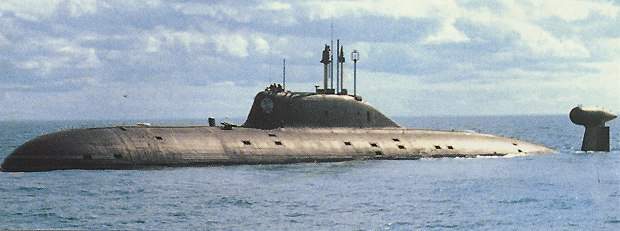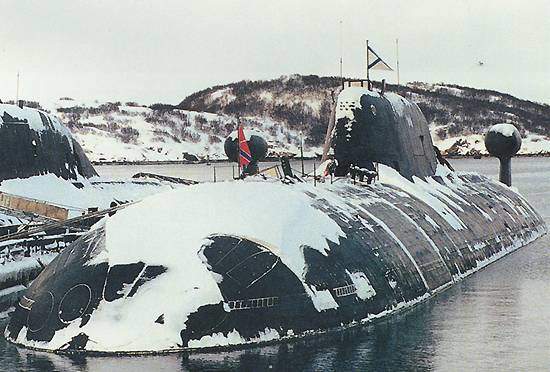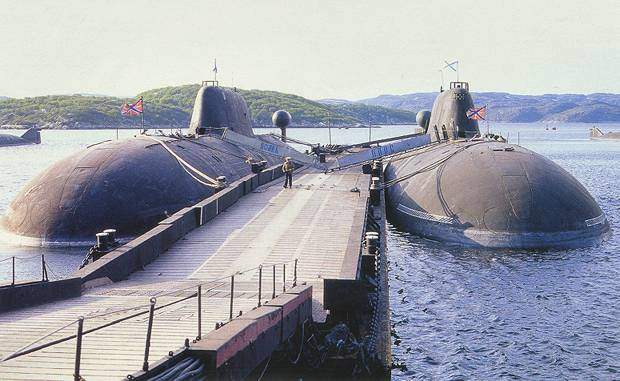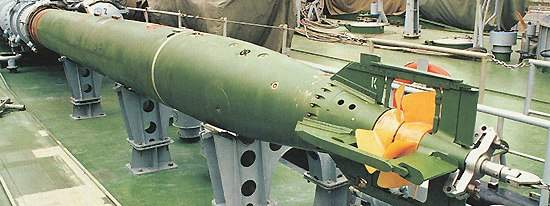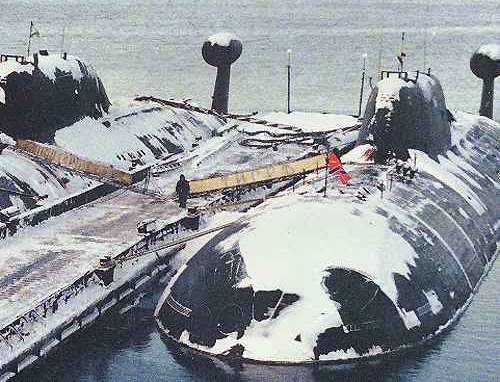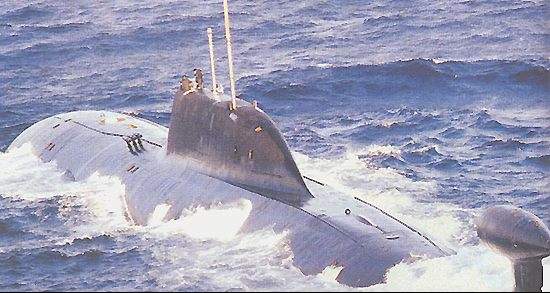The Russian Navy has 14 Bars Class project 971 submarines known in the West as the Akula Class nuclear-powered submarines (SSN). A number of Russian Akula class submarines are deployed in the Pacific region.
The submarines were built by the Amur Shipbuilding Plant Joint Stock Company at Komsomolsk-on-Amur and by Sevmash at the Severodvinsk shipbuilding yard. Seven Akula I submarines were commissioned between 1986 and 1992, and three Improved Akula between 1992 and 1995. The improved Akula I and Akula II are also designated as Project 971U and Project 971A respectively.
The Akula Class submarine was deployed for the first time in 1986 by the Soviet Navy.
Three Akula II submarines, with hull length extended by 4m and advanced machinery-quietening technology, have been built.
The first, Viper, was commissioned in 1995, the second, Nerpa, in December 2000 and the third, Gepard, in August 2001. The Akula II submarines are 110m long and displace up to 12,770t. They have a maximum speed of 35kt submerged and a maximum diving depth of 600m.
The oldest submarine, Akula I, is likely to be removed from service by 2015, while the Gepard Akula II is expected be withdrawn from service by 2025.
Akula Class submarine history
Construction of Akula II began in 1991, but it was suspended for a period of ten years due to lack of funds.
The Indian Navy signed an agreement with Russia to lease a new Akula II submarine, the SSN Nerpa, for ten years. The vessel was completed at the Komsomolsk-on-Amur shipyard and commissioned to the Russian Navy in December 2009. The submarine, renamed INS Chakra, was recommissioned by the Indian Navy in April 2012.
Initially, the Akula II submarine was scheduled to be delivered to India in August 2007. However, the induction was postponed to 2009 due to recurred delays caused by the installation of new systems and technologies on Nepra and due to an attack on the latest series of Schucka-B or Akula-II Class Russian-built submarines.
Delivery was further delayed due to a fatal gas leak causing the deaths of 20 crew members during sea trials in November 2008.
Akula submarine design
The submarine has a double-hulled configuration with a distinctive high aft fin. The hull has seven compartments and the stand-off distance between the outer and inner hulls is considerable, reducing the possible inner hull damage. The very low acoustic signature has been achieved by incremental design improvements to minimise noise generation and transmission – for example, the installation of active noise cancellation techniques.
The retractable masts viewed from bow to stern are the periscopes, radar antennae, radio and satellite communications and navigation masts.
Missiles
The Akula Class carry up to 12 Granit submarine-launched cruise missiles. The missiles are fired from the 533mm torpedo launch tubes. Granit (Nato designation: SS-N-21 Sampson) has a range of about 3,000km and delivers a 200kt warhead.
The CEP (the circle of equal probability) is 150m. The CEP value is a measure of the accuracy of strike on the target and is the radius of the circle within which half the strikes will impact. The land attack Granit missile uses inertial and terrain following guidance.
The submarine’s anti-ship missiles are the Novator SS-N-15 Starfish and the Novator SS-N-16 Stallion. The Starfish, fired from the 533mm tubes, has a target range of 45km. The Stallion, fired from the 650mm tubes, has a longer range of up to 100km. The Stallion and the Starfish can be armed with a 200kt warhead or a type 40 torpedo.
An air defence capability is provided by a Strela SA-N-5/8 portable missile launcher with 18 missiles.
Torpedoes
The submarine has eight torpedo launch tubes, four 650mm and four 533mm tubes. The Improved Akula and Akula II have ten, with six 533mm tubes. The four 650mm tubes can be fitted with liners to provide additional 533mm weapon launch capacity. The torpedo tubes can be used to launch mines instead of torpedoes. The Akula can launch a range of anti-submarine and anti-surface vessel torpedoes.
Sensors
The Akula’s surface search radar is the Snoop Pair or the Snoop Half. The surface search radar antennae are installed on the same mast as the Rim Hat radar intercept receiver.
The submarine is fitted with the MGK 540 sonar system which provides automatic target detection in broad and narrow-band modes by active sonar. It gives the range, relative bearing and range rate.
The sonar system can also be used in a passive, listening mode for detection of hostile sonars. The sonar signal processor can detect and automatically classify targets as well as reject spurious acoustic noise sources and compensate for variable acoustic conditions.
Propulsion
The main machinery consists of a VM-5 pressure water reactor rated at 190MW with a GT3A turbine developing 35MW. Two auxiliary diesels rated at 750hp provide emergency power. The propulsion system drives a seven-bladed fixed-pitch propeller.
The propulsion system provides a maximum submerged speed of 33kt and a surface speed of 10kt. A reserve propeller system, powered by two motors rated at 370kW, provides a speed of 3kt to 4kt. The submarine is rated for a diving depth to 600m.

